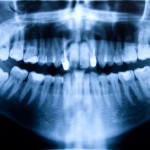
Removal of impacted third molars is one of the most commonly performed surgical operations. Post-operative pain, swelling and restricted mouth opening are commonly associated with the procedure. A number of studies have shown positive results using systematically administered corticosteroids before or after the extraction of third molars.
The aim of this review was to assess the effectiveness of submucosal dexamethasone injection to control the postoperative signs and symptoms following impacted third molar surgery.
Methods
Searches were conducted in the PubMed/MEDLINE, Cochrane Central Register of Controlled Trials, and Web of Science databases without date or language restrictions. Randomised controlled trials (RCTs) and prospective controlled studies comparing the effect of the submucosal injection of dexamethasone with that of placebo after impacted third molar surgery were considered. Two reviewers selected studies with study quality being assess using the Cochrane risk of bias tool. Continuous variables (oedema, pain, and trismus) were subjected to meta-analysis when at least two studies analysed the same data type.
Results
- 8 RCTs involving a total of patients 476 were included, (256 in test groups, 220 in the controls).
- Only 1 study was at low risk of bias.
- Dexamethasone concentrations of 4, 8 and 10mg were tested with all of the studies using saline as a placebo.
- Oedema (6 studies) meta-analysis found a statistically significant difference in favour of dexamethasone; MD= -2.20 (95% CI; -2.70 to -1.70) (P < 0.00001).
- Trismus (6 studies) meta-analysis found no difference. MD= -2.92 (95% CI; -7.13 to 1.29) (P = 0.17).
- Pain (4 studies) meta-analysis found a statistically significant difference in favour of dexamethasone; MD= -1.79 (95% CI; -3.28 to -0.30) (P = 0.02).
Conclusions
The authors concluded:
The results of this meta-analysis suggest that the submucosal injection of dexamethasone presents a reduction in the postoperative signs and symptoms resulting from impacted third molar surgery, especially those associated with oedema and pain. In relation to trismus, the meta-analysis showed no statistically significant difference between dexamethasone and the placebo solution.
Comments
The authors have searched 3 large databases and have not restricted on language it is not clarified if any non-English language studies were considered. Analysis did suggest the possibility of publication bias. Only one of the included RCTs was considered to be at low risk of bias and a range of dexamethasone concentrations were employed, with 1 study using 10mg, 2 studies 8mg and the others 4mgs. Consequently more information is needed from better quality trials to clarify the most effective dosage.
It is interesting to note that the study with the lowest risk of bias was the oldest of the included studies being published in 2006. Since the CONSORT statement on the reporting of randomised trials was first published in 1996 with updates in 2001 and 2010 it is disappointing that more of the recent trials are not following these reporting recommendations.
Links
Primary paper
Moraschini V, Hidalgo R, Porto Barboza ED. Effect of submucosal injection of dexamethasone after third molar surgery: a meta-analysis of randomized controlled trials. Int J Oral Maxillofac Surg. 2015 Oct 9. pii: S0901-5027(15)01325-9. doi: 10.1016/j.ijom.2015.09.008. [Epub ahead of print] Review. PubMed PMID: 26458538.
Other references

Dexamethasone helps decrease pain and swelling following third molar surgery https://t.co/DbB3Eartct
Dexamethasone reduced pain and swelling following third molar surgery https://t.co/DbB3Eartct
Dexamethasone reduced pain after third molar surgery
https://t.co/DbB3Eartct
Submucosal dexamethasone reduced postoperative signs and symptoms from third molar surgery https://t.co/DbB3Eartct
Dexamethasone reduced swelling after third molar surgery https://t.co/DbB3Eartct
Don’t miss – Dexamethasone reduced pain and swelling following third molar surgery https://t.co/DbB3Eartct
Steroids and more recently IV tar examine acid have transformed Maxillofacial surgery in the last 20 years . I give virtually all my patients steroids per op!